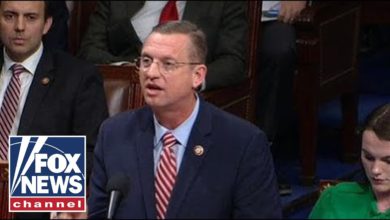
He was small at 5 pounds, 9 ounces. His tiny face scrunched up and he wailed. To Brittany Hurley, the first time she saw her newborn on Jan. 11, 2018, was joy. His cry, “a dagger.”
“I knew my life had just begun. My new life,” says Hurley, who is in recovery from heroin addiction. “He pulled me from the brink of death, literally. But along with that feeling came the dagger. My windpipe felt like it had been closed off. That's when the feelings of guilt and all the what-ifs came rushing in.”
Hurley was taking methadone for her opioid use disorder. She worried about her baby. What if Axl had been exposed to it in utero? And what if, after separating from her, he experienced withdrawal? What if he needed opioid medication to ease the symptoms?

What if he had Neonatal Abstinence Syndrome? What then?
An infant is diagnosed with Neonatal Abstinence Syndrome every 19 minutes in the United States. Withdrawal symptoms can include diarrhea, sleep disruption, vomiting, fever, inability to feed properly, tremors and more.
The syndrome is expected in U.S. hospitals. After all, the United States is still in an opioid epidemic. Despite all precautions against it, some pregnant women have addiction and continue to use opioids. And even for pregnant women no longer using, the best treatment is prescribed opioid medication – methadone or buprenorphine – which stabilizes the mother and can prevent relapse. If they don't take it, relapse and use again, that could have devastating effects on the fetus.
Still, the opioid can cross the placenta, causing dependence in the fetus.
But just as medication is best for these mothers, latest research shows that the best treatment for their newborns is mom.

Because, well, mom
The idea stems from a mom-centered approach to caring for opioid-exposed newborns called Eat, Sleep, Console. In 2017, Yale University's Dr. Matthew Grossman was the first to publish about this approach.
Grossman wrote that the traditional evaluation for NAS babies, the Finnegan Neonatal Abstinence Scoring System, "may lead to unnecessary opioid treatment of infants."
With Finnegan, developed in 1974, newborns are separated from their mothers and brought into the neonatal intensive care unit, where scoring for withdrawal symptoms begins. Higher scores can lead to a decision to give the infant opioid medication to quell withdrawal. ( Later, the baby is weaned from that medication.)
With Eat, Sleep, Console, infants and moms are kept together and the infant is evaluated this way: Is the baby feeding normally? Is she able to sleep? Can he be consoled within 10 minutes of crying?
Grossman believed that if the three conditions were satisfied in a low-stimulation environment for the baby – and with mom providing most of that care – the infants would be less likely to need withdrawal medication. That's exactly what happened: The newborns were less likely to be put on morphine (or other drugs) for withdrawal than the Finnegan babies. They were discharged after fewer days in the hospital. And, because of this, cost of care was lower.

Now, three hospitals in the Cincinnati area – Good Samaritan, University of Cincinnati Medical Center and St. Elizabeth Heatlhcare-Edgewood – are among 26 nationwide trying it in a clinical study. Around the state, Nationwide Children’s Hospital in Columbus and Case Western Reserve University in Cleveland are taking part. The hospitals will transition care of potentially opioid-exposed babies from the Finnegan scoring system to the Eat, Sleep Console approach.
The study is sponsored by the National Institutes of Health through an effort to address the opioid epidemic called the HEAL initiative. It started Sept. 8, 2020, and will end in November 2022.
“The chorus has gotten louder against Finnegan,” said Dr. Stephanie Merhar of Cincinnati Children’s Hospital Medical Center, who has been a Neonatal Opioid Withdrawal Syndrome attending doctor for 10 years. "Often by mothers."
Objectivity in question
Merhar is not permitted to speak about the clinical trial that’s underway, though she is working with two local hospitals involved. But she spoke on the “Impact of Prenatal Opioids, Mothers and Babies” July 14 as part of a University of Cincinnati College of Medicine Center for Addiction Research speaker series.
The problem with Finnegan? "There is a huge swing of difference in scores between nurses,” Merhar said.
It was so obvious in some cases even new mothers could see the problem.

Hurley says she saw it with her first son.
“One nurse would score him for sneezing three times in a row, and the other wouldn’t. One nurse would score him for a poopy diaper. The other one wouldn’t.”
Hurley says Axl got good medical care at St. Elizabeth-Edgewood, and it turned out he was not given medication. But she was confused and upset with the Finnegan scoring. And she felt that some nurses discounted her ability to be a mother.

“I knew that they weren’t talking to me the same way as other mothers,” she recalls. “One nurse said, ‘This is very serious Ms. Hurley.’ I’m like, ‘I’m aware of that.’”
Other mothers have those same feelings, Merhar said.
"Moms feel a big loss of control with the Finnegan method," she told learners at the summer speaker event. “We as medical professionals have probably made it worse.”
With Eat, Sleep, Console, mothers are informed about infant care during prenatal visits. After the baby is born, nurses show the nervous new mom how best to care for her infant. They keep the pair together rather than moving the infant to a noisy neonatal intensive care unit.
They emphasize to the mother, Merhar says, "'You are the primary treatment for your baby.'”

Moms stand up for their babies
Hurley says she learned about the Eat, Sleep, Console method in 2019 while she was pregnant with her second son.
She did not learn about it from medical professionals, however. Instead, she saw a post on a private Facebook support group for moms on medication-assisted treatment about Eat, Sleep, Console.
"MoMATs" was started in 2018 by a New Jersey mother, Arielle Estes, known in the group as "Arielle Peachy Peach." More than 2,100 women are members.
"If a woman comes in searching for answers, (she's) generally nervous and anxiety-ridden. We try to educate them as much as possible about what to expect at the hospital and how to advocate for themselves and their babies," Estes said. "We tell women to do Eat, Sleep, Console because the basis is, mother is the best medicine.
"A lot of these babies do not need to be medicated, but when you have a very subjective scoring system – Finnegan – and maybe a biased nurse stigmatizing medication-assisted treatment (for the mom), then medication for the baby can feasibly happen with no need for it," Estes said. "These women feel like they have more of a chance with the Eat, Sleep, Console method, but a lot of hospitals have still not implemented it."
Hurley was intrigued.

"And because I felt so blindsided the first time," she says, "I made sure I knew what was going on" the next time.
That came on May 3, 2019. It was before the Eat, Sleep, Console clinical trial started in Cincinnati-area hospitals, but some of the nurses at St. Elizabeth-Edgewood seemed to be aware of the approach, Hurley says.
“I’d researched a lot, so I was able to advocate for myself and my son. I brought it up. I was like, ‘Do you care if we integrate ESC a little bit?’"
Journey still had Finnegan scoring, because that was the standard at the hospital. But nurses were receptive to Hurley.
“Thank God, the nurses were great," she says, "and we were allowed to do Eat, Sleep, Console."
From his first breath, son Journey was almost always with his mother. They snuggled skin-to-skin. She fed and cared for her baby.
“We dimmed the lights," she says.
Journey did not need medication for withdrawal. The family went home together six days after his birth.
Already focused here
Cincinnati area hospitals are not new to improvements in the care of babies born to mothers with opioid-use disorder.
Dr. Scott Wexelblatt, medical director for regional newborn services at Cincinnati Children's, led a community-wide NAS Task Force formed in 2012 to improve the care for opioid-exposed babies. The group worked on both non-medication and pharmacologic care, Wexelblatt says. Their work brought significant results.
They used a care bundle including swaddling, non-nourishment sucking, with pacifiers, skin-to-skin care and breastfeeding. They optimized medication use with a stringent protocol, Wexelblatt says, and improved the babies' caloric intake. The work led to a drop in the infants' hospital stays in the region and statewide. With that came a drop in costs.
In 2009, 76% of opioid-exposed newborns were treated with medication-replacement therapy. That dropped in 2018 to 29%. "These protocols and bundles of care continue," Wexelblatt says.
Pediatric and neonatal doctors hope more improvement comes with Eat, Sleep, Console.

Hope for other moms
On an afternoon in July, Axl and Journey play on their living room floor at home as Hurley talks about her children's births.
Now 2, Journey keeps up with his big brother fairly easily, all the while sucking on or clutching his pacifier. They chatter incessantly. They love to watch Paw Patrol on TV, though it appears they'd rather play with their Paw Patrol toys.
Their mom is stay-at-home for now, with her fiance, Marcus Ashcraft, working full time as a welder. But Hurley has earned peer mentor certification, which allows her to work with other people with addiction. She wants to get a job helping moms.
For now, Hurley advocates for moms who are on medication for opioid use disorder. She's been featured on a billboard in Covington that was designed to normalize medication-assisted treatment. She is quick to respond to women in the MoMATS support group who have questions about Eat, Sleep, Console.
"My hope is that all hospitals will implement Eat, Sleep, Console," she says. "Nurses and doctors need to be up-to-date on how much more successful it is compared to Finnegan. It's also less stressful. You aren't obsessing over numbers and scores. Instead you're focused on nurturing your baby."
Hurley glances at her healthy little boys playing together. She is convinced: "The idea behind 'mommy is the best medicine' works."

Source link







